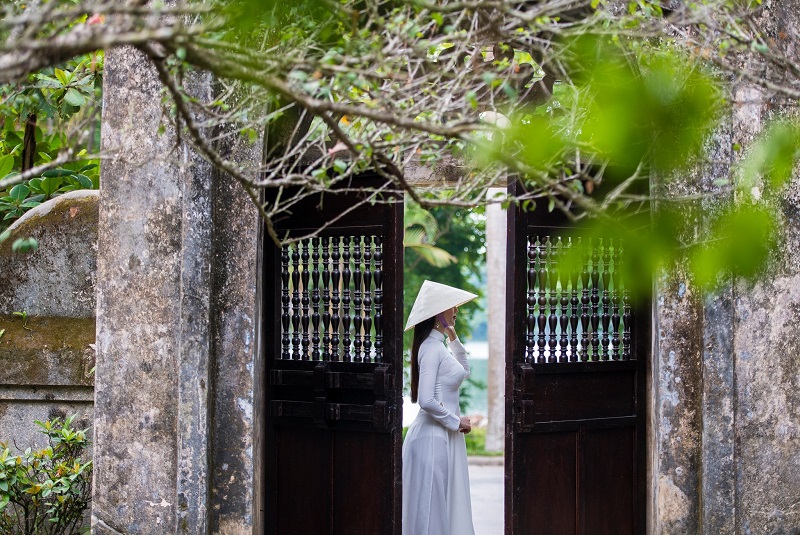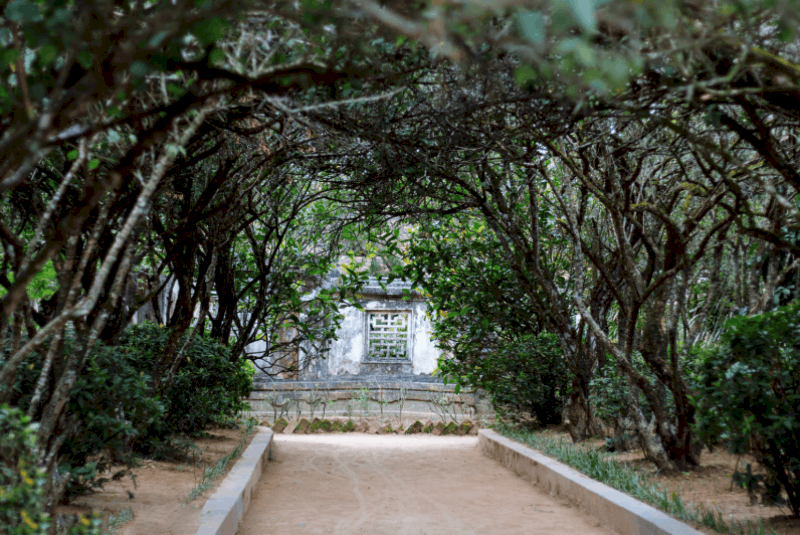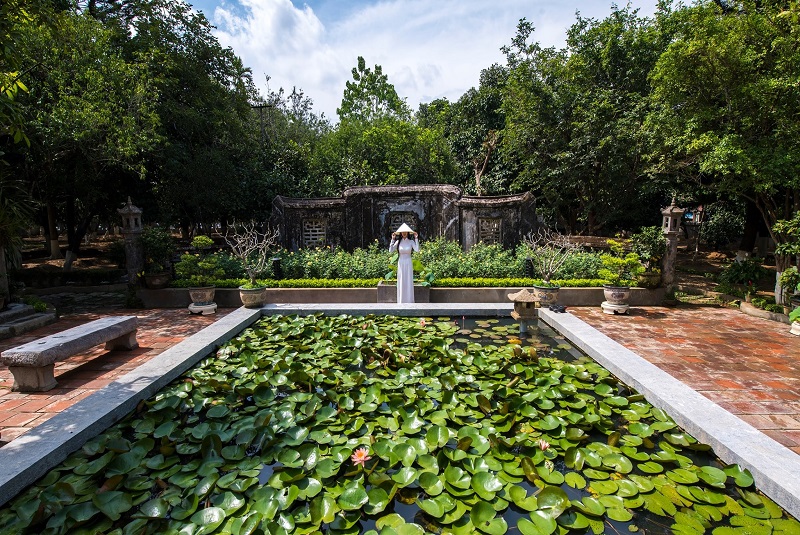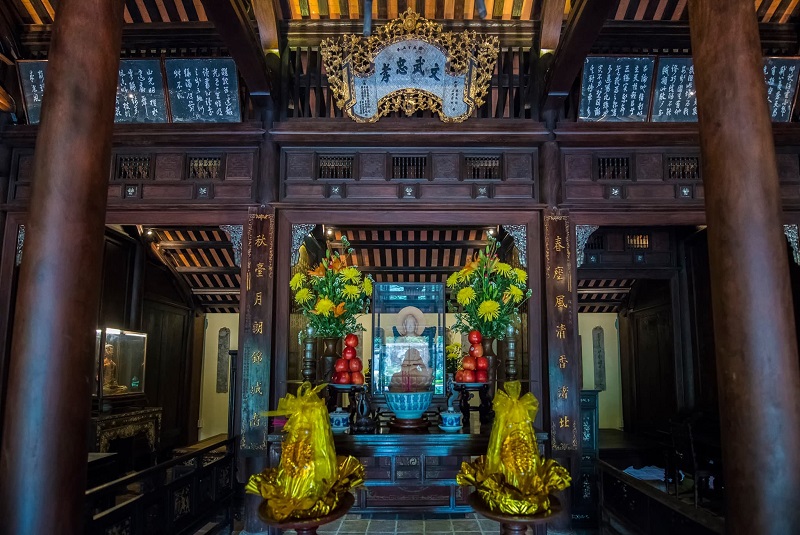3.1. The entrance

An Hien ancient house entrance
The entrance leading straight into the garden features a small arched gate made out of mortars and bricks. Along the entrance stands two lines of apricot intertwined together and providing green shade for a hot summer.
Turn left and pass the screen inscribed with “Tho” (known as longevity), you’ll reach a rectangular shaped lake filled with water lilies and their green rounded leaves.
An Hien garden house gate faces to Perfume River so it gets the good Fengshui. In Vietnam, we think if your houses get perfect Fengshui, you will get richness and family members are always in good health.
3.2. The entrance screen

The entrance screen at An Hien house
Long times ago in Vietnam, we cared very much about Fengshui and Privacy. Our houses before were just connecting rooms houses. No high buildings like nowadays.
So it was very easy for people from outside can see everything inside the house. We needed privacy so that in the middle of the main house and the gate there is a screen. It is also a part of Fengshui as well.
3.3. The small pond

The pond at An Hien house
Right after the screen is the small pond with beautiful water lilies. It is not only for decoration, Fengshui, but also to be a natural air-conditioner. It makes weather cooler in the summer and warmer in the wintertime.
Following Fengshui in Oriental philosophy, Feng means the winds and Shui means water. It is an art to make zin and Jang balance.
3.4. The main house

An Hien ancient house
Then, you’ll see the main architecture of An Hien garden house. The house includes three compartments and two wings located almost in the heart of the garden carved in a delicate wa